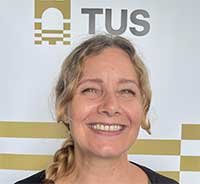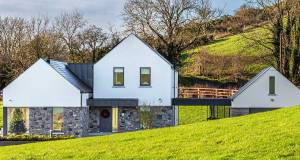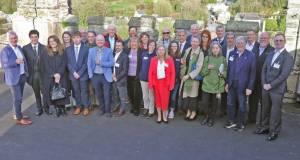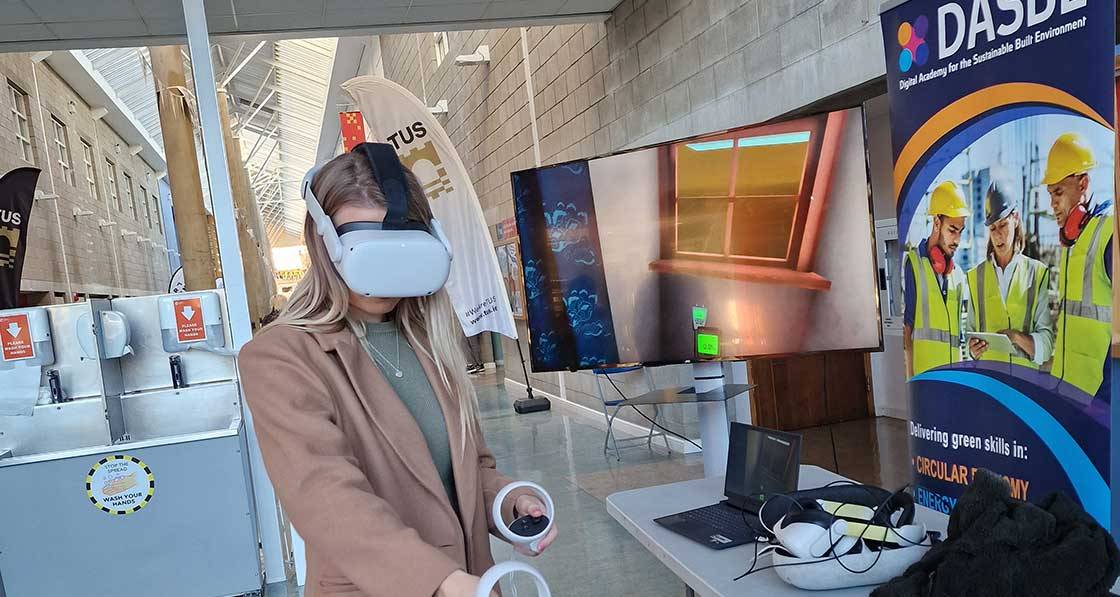
- Feature
- Posted
Licence to skill
The ever-tightening ambitions to integrate sustainability throughout Ireland’s new and existing buildings won’t be realised unless we can find smart, flexible ways to upskill the industry. Lis O’Brien of Technological University of the Shannon (TUS) explains how Digital Academy for Sustainable Built Environment (DASBE) has it cracked.
This article was originally published in issue 45 of Passive House Plus magazine. Want immediate access to all back issues and exclusive extra content? Click here to subscribe for as little as €15, or click here to receive the next issue free of charge
DASBE is creating an innovative digital training platform where professionals and workers alike can not only find and choose from a range of programmes, but also develop their own training plans. In a bid to respond to the ever-changing demands of the construction industry, DASBE is funded under Pillar 3 of the Higher Education Authority Human Capital Initiative.
New training is constantly being designed and developed, and DASBE is always looking for new ideas and needs from the industry. Whether this training leads to micro credentials or certificates, if the training is funded by DASBE, it will always be accredited. It’s about knowing that you will be upskilled by the best in the industry and validated by professional bodies.
For individuals and companies alike, upskilling is essential. The industry is constantly moving forward, and regulations have changed significantly in the last five years. The “bibles” for the industry, such as the Building Regulations, and NSAI’s SR 50 (Standards for modern plumbing and heating) and SR 54 (the code of practice for the energy efficient retrofit of dwellings, which is currently under revision) are key to understanding construction – especially for residential buildings.
Residential buildings in particular need our help. The level of construction in many cases is still well below par and the “performance gap”, a common expression used these days, is not being closed. Often, I am told about short-cuts being made – short cuts which are lethal to the quality of build. This can be anything from poor window installation causing thermal bridging, to the stubbornly persistent phenomenon of cavity walls packed with paper cups and rubbish from the site – like some nightmarish subversion of the circular economy – and, shockingly, no DPC being installed.
Eleven years ago, we at TUS started a campaign for quality construction with the Build Up skills (BUSI) project QualiBuild. Some older – or should I say more mature – readers may remember this. But unsurprisingly, poor workmanship still exists. I suppose it is politically incorrect to use gendered words like workmanship, but I stand by the use of the word in this case as the uptake of women in the market is still so low.
Women currently make up less than 10 per cent of the construction workforce in Ireland – with only 1 per cent taking up jobs working on site. So how do we rebalance the gender quota?
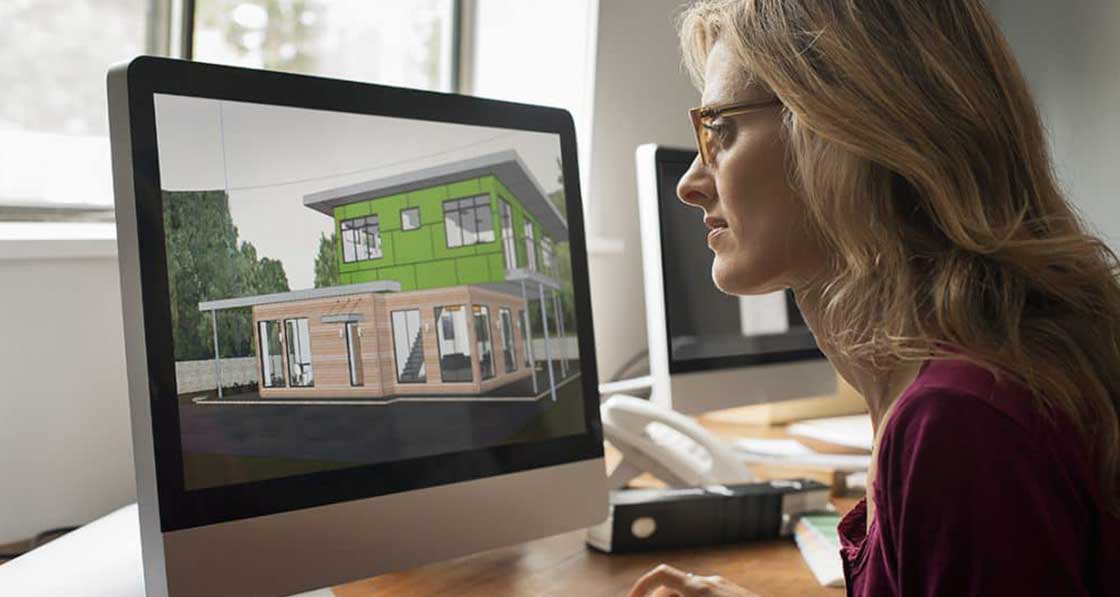
In reality there is interest, especially from the younger cohort, but as usual the infrastructure is not there. What I mean by this is that a woman with young children needs child support and incentives to help working on site. This is why many move towards the managerial or administrative roles. I was lucky – or perhaps I struggled unnecessarily – in that I was self-employed supervising work on site for houses and small retrofits in the middle of the boom, so I didn’t have to travel far for work and childcare was worked around.
The dramatic changes to the roles of workers in the construction industry are pretty obvious now, with an urgent need for young people with IT skills. Let’s face it – anyone below 30 has been brought up with laptops and gaming. This skillset fits pretty well into the role of a drone operator, robotics operators, and BIM technicians and coordinators. There is less heavy lifting on site now and it certainly isn’t a dirty workplace, with the advent of modern methods of construction (MMC), heat pumps and green technologies.
Given the opportunity and the transformation that’s occurred in how we build, if you’re not currently working in construction, why wouldn’t you want to join? So let’s get back to upskilling or even reskilling. We all need to be diverse in our life and a change of direction is always good.
Recent research in DASBE and Build Digital projects has predicted the urgent need in the construction sector for a number of key roles. Retrofit experts (in particular for dwellings), traditional building advisors, site coordinators / clerk of works, heat pump installers and technicians, BIM coordinators and technicians, and drone and scanning experts are some of the needs which are being looked at by DASBE. We are busy working with the industry and other educational bodies such as the educational training boards, the Construction Industry Federation and of course other technological universities. It’s a busy period ahead, but it will be worth it in the end to upskill our workforce. It may be fair to say that we are one of the most upskilled workforces in Europe – and that comes from my experience working on EU projects for over 12 years and speaking at many events in Europe on construction skills – but we still have so much room for improvement.
One of the most challenging areas for the industry is the energy renovation of traditional buildings. This has rapidly become a popular topic with the announcement of the Conservation Advice Grant Scheme for Vacant Traditional Farmhouses. This avails of expert advice and supports the Vacant Property Refurbishment Grant of up to €50,000 to renovate a vacant property. And an added bonus is that these grants can be used in conjunction with the existing Sustainable Energy Authority of Ireland (SEAI) grants to help improve the energy efficiency of a home.
So how can we make sure the advice is suitable for the building? We need to make sure that architects and engineers working on these buildings have the knowhow – and also the skills – so that when they give advice, it’s the right advice, because renovating a pre-1940s vernacular building is a different kettle of fish to a newer concrete build. This is where the Certificate in Energy Renovation of Traditional Buildings comes into play. People who gain this accreditation will know how to prepare a condition survey, how to detect defects and competently analyse them, and how to make informative decisions to get it right from the start, before any extensive retrofit works have happened.
The Certificate in Energy Renovation of Traditional Buildings supported by the Irish Heritage Council starts in September for twenty-four weeks and has the illustrious Colm Murray – a bona fide heritage guru – delivering the first module on the fundamentals of energy renovation.
You could be forgiven for thinking digital tools and building information modelling (BIM) are restricted to the cutting edge of modern construction, but try telling that to Finola Deavy, our own renowned TUS lecturer. Finola is a passionate advocate for the application of digitalisation in heritage buildings and will deliver a module on how to prepare a condition survey, and how to use digital tools to streamline your work and investigate defects in more detail.
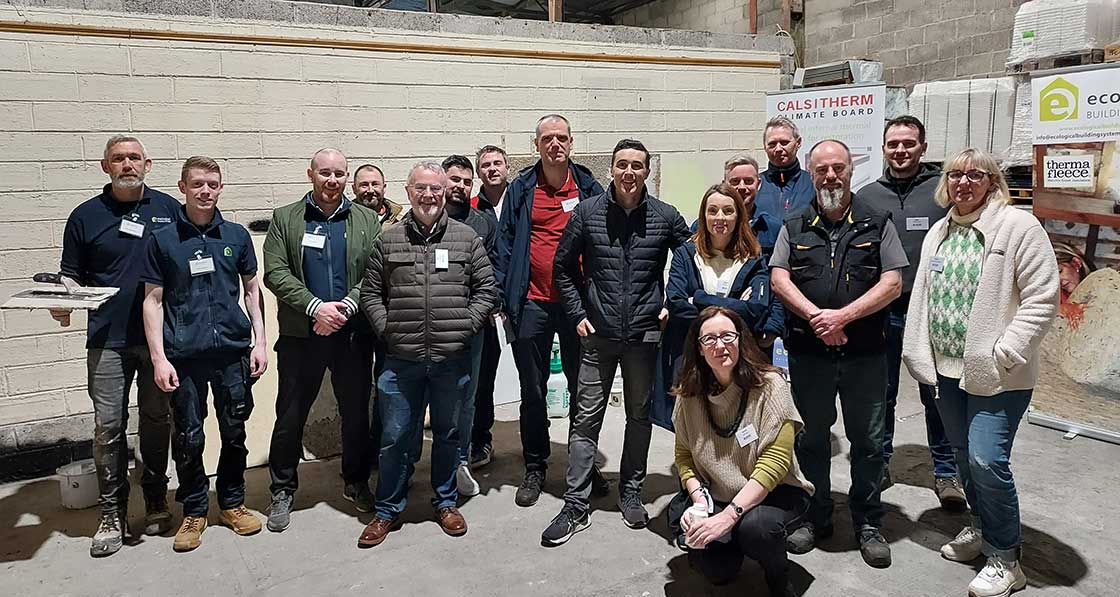
What’s not to like? The last run of this certificate was hugely popular and feedback was, frankly, amazing, with glorious testimonials and praise for not only the lecturers, but also the expert industry speakers, practical workshops and informative site visits.
“It’s been great in terms of learning about different ways to improve the energy efficiency of the buildings - roofs, floors, windows, walls etc.” said John Beatty, conservation officer, Dublin County Council. “It’s covered a whole gambit, starting from first principles and basics through to complexity of porosity and hygroscopic materials. There’s been a really good mix of people on the course – architects, people working in authorities, BER assessors and contractors themselves and this stimulated a range of conversations which I found really useful. I really enjoyed the site visits in the Georgian Quarter in Limerick seeing physical case studies, and the speakers themselves have a really broad range of knowledge. Having international speakers and keynote speakers from Ireland was fantastic and it has been really worthwhile. I enjoyed it.”
Angela Naughton, senior assistant chief fire officer, fire & building control department, Clare County Council was equally positive: “From completion of this course, I have a far better understanding of how modern materials and modern practices cannot simply be imposed onto older buildings that were designed on entirely different principles, where issues of moisture movement and risk are different from those found in new construction.
“I was inclined to encourage everyone that was carrying out retrofit works to strive for compliance with the Building Regulations,” said Naughton. “I now have a better understanding that the Building Regulations cannot always be applied to traditional buildings. I also have a better understanding on how the use of computer models such as DEAP to predict energy use in traditional buildings is not very accurate as the default values of DEAP are often significantly different to measured energy use. Rather than relying on default values, an understanding of renovation materials and traditional materials must always be considered.”
Hopefully this interactive, informative and innovative course will continue to be acknowledged. It should be noted that this year the delivery is now fully blended with evening online lectures, practical workshops and site visits around Ireland. If you have any building that we can showcase on this course reach out to us, as we could well include it.
We also have the Certificate in Scan to BIM and the newly validated Assets for VR, which actually fit very nicely within the realm of renovating traditional and historical buildings by gathering detailed information and collecting this in a database to assess and carry out pathological analysis if required. And last, but definitely not least, one course that will be very popular and will be a game changer in renovation is the Certificate in Drones for Construction. While this course is specifically aimed at attracting younger learners, it does not exclude more mature learners.
For more information visit www.dasbe.ie

